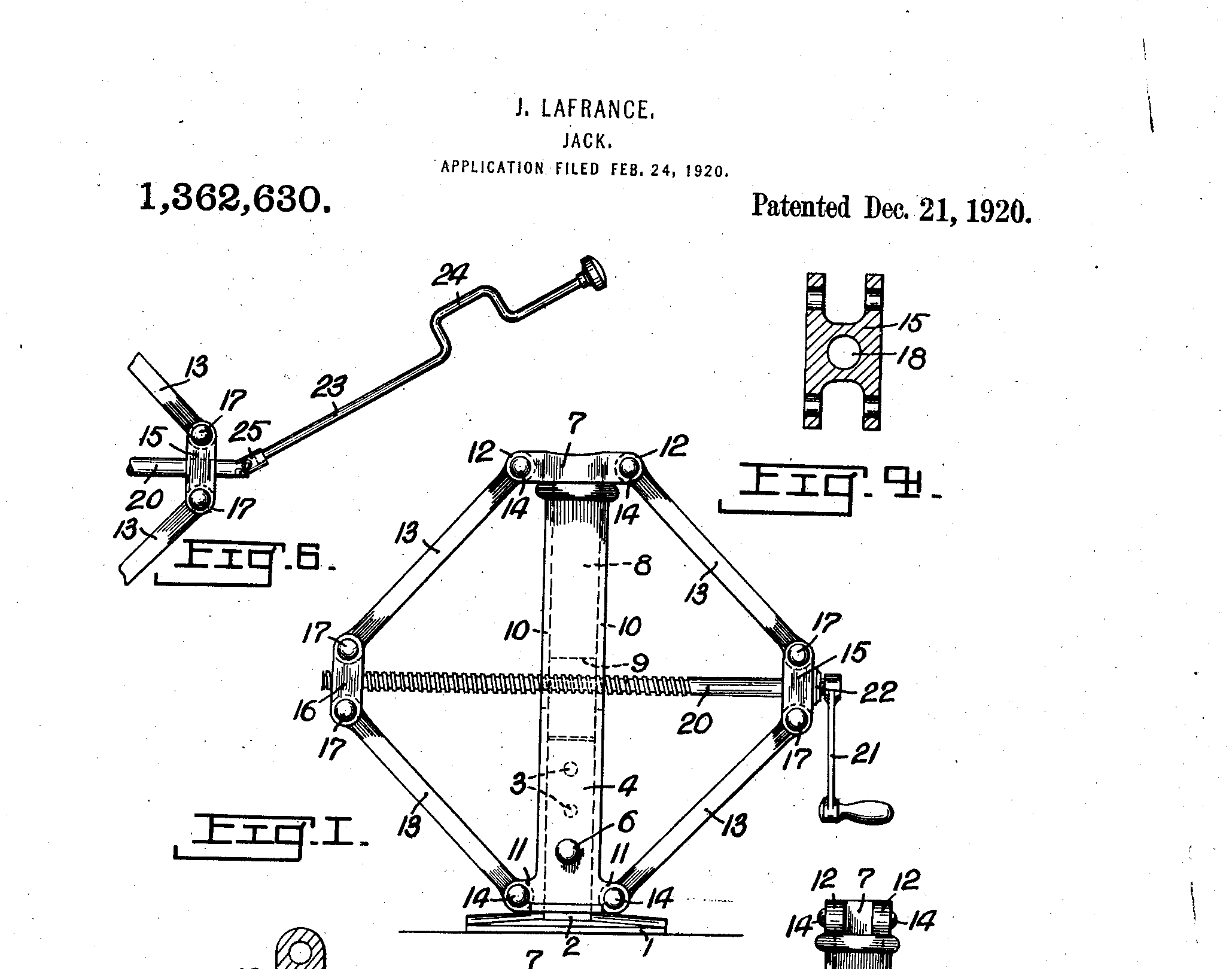One of the most important features of your vehicle is one you hope never to need, but you’d be sore if it wasn’t there when you did. It’s the diamond-shaped scissors jack under your spare or crammed under the front seat.
Never mind where they hid the other parts you need to use the darn thing. That’s all the fun of changing a flat in the dark when it’s snowing.
Where is the thing that goes with the thing??
In fairness, “the car jack” could mean one of several different types of jacks. For our purposes, we’re talking about the scissors version.
It may not be the easiest version of the car jack to use, but darn it it’s handy. Without it, many a motorist would still be stuck on a road somewhere with a flat. What we wanted to know is who invented the thing.
The Jack Trail
The trail to finding the original inventor of the car jack is messy. It’s like trying to figure out who invented the ramp.
The scissors jack is an adaptation of the screw jack. A screw is a ramp wrapped around a post. Ramps are one sort of simple machine, a privilege humanity has enjoyed since before Christ walked the Earth.
The screw jack works with the screw shaft situated vertically. Placed under a navy object, the object lifts when the operator turns a crank connected via sprockets and such to turn the screw shaft one thread at a time.
Leonardo da Vinci supposedly used screw jacks to lift heavy objects, but it’s doubtful the idea was his alone. What matters to our research was figuring out who took the basic screw and turned it sideways so a human of any strength could turn a crank to lift a car off the ground.
Despite holes in modern patent records, Google Patents holds the most complete history of patents…
Joseph LaFrance
When Jack LaFrance submitted his design for a diamond-shaped jack on February 24, 1920, it was in Montreal, Quebec. That’s right, he was Canadian.
His patent is the oldest one in Google Patents under the name “scissor jack.”
The timeline and his name lend themselves to the credibility of the research. Plus, the picture looks like your basic scissors jack.
There is a base, and a platform, connected by two legs which bend at the knees in opposite directions. Through those knees, the spindle travels to raise or lower the platform, presumably under one’s car.
Good job, LaFrance!
Proliferation
LaFrance may have beaten the trail of inventors to the basic concept, but putting one in every car didn’t happen right away. Further refinements, like the 1949 version from Wilbur Jackson would make the jack more collapsable so it could stow with ease.
By best estimates, screw jacks made it into cars by the 1970s, but they may have made appearances elsewhere before that. If your car had a jack before that, it was bumper jack, a ratcheted dangerous design that can hang its hat on countless injuries and deaths.
Had I any idea the complexity of the history behind jacks, I would have never suggested this pitch to my editor. Don’t even get me started on the hydraulic jack. That’s an even bigger mess, with claims made by different inventors, one we’ll save for another blog. No doubt, given the choice, give me a hydraulic lift anyway.
Meanwhile, let’s all be grateful to the first Jack, Mr. LaFrance, that we can all change our tires in the snow by turning a little crank. Alternatively, one could call the motor club for assistance. Just sayin’.




